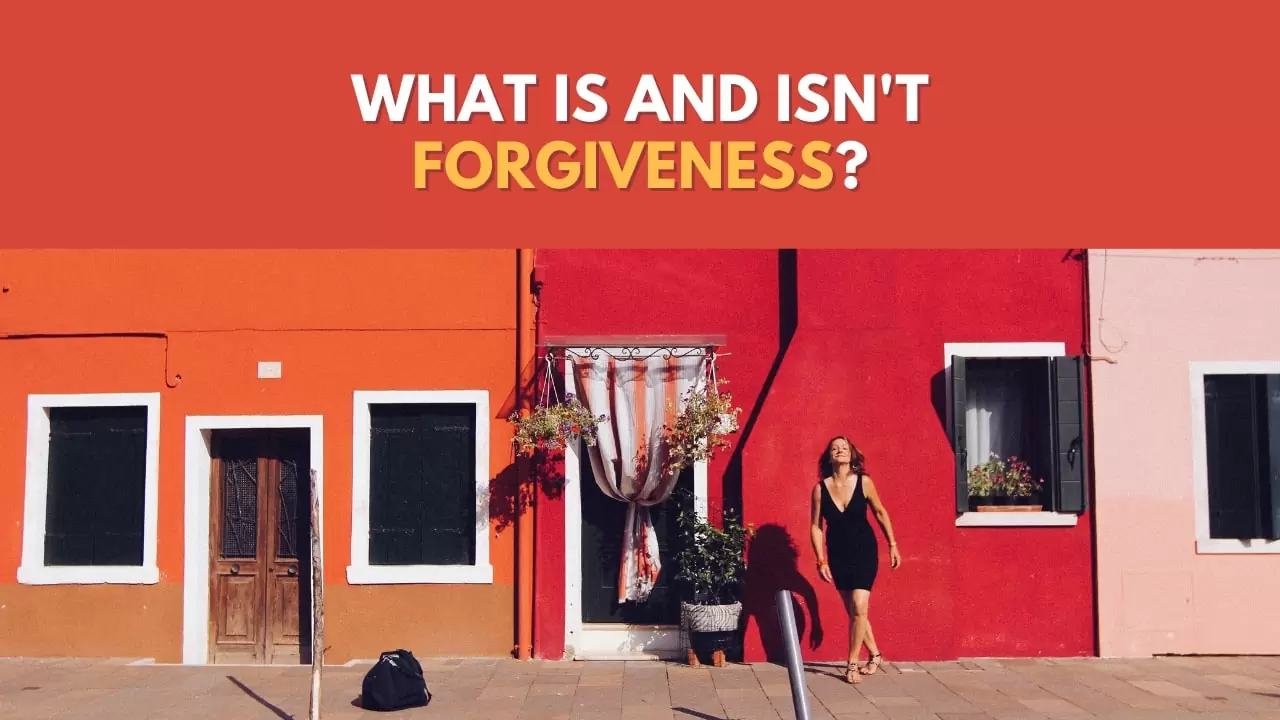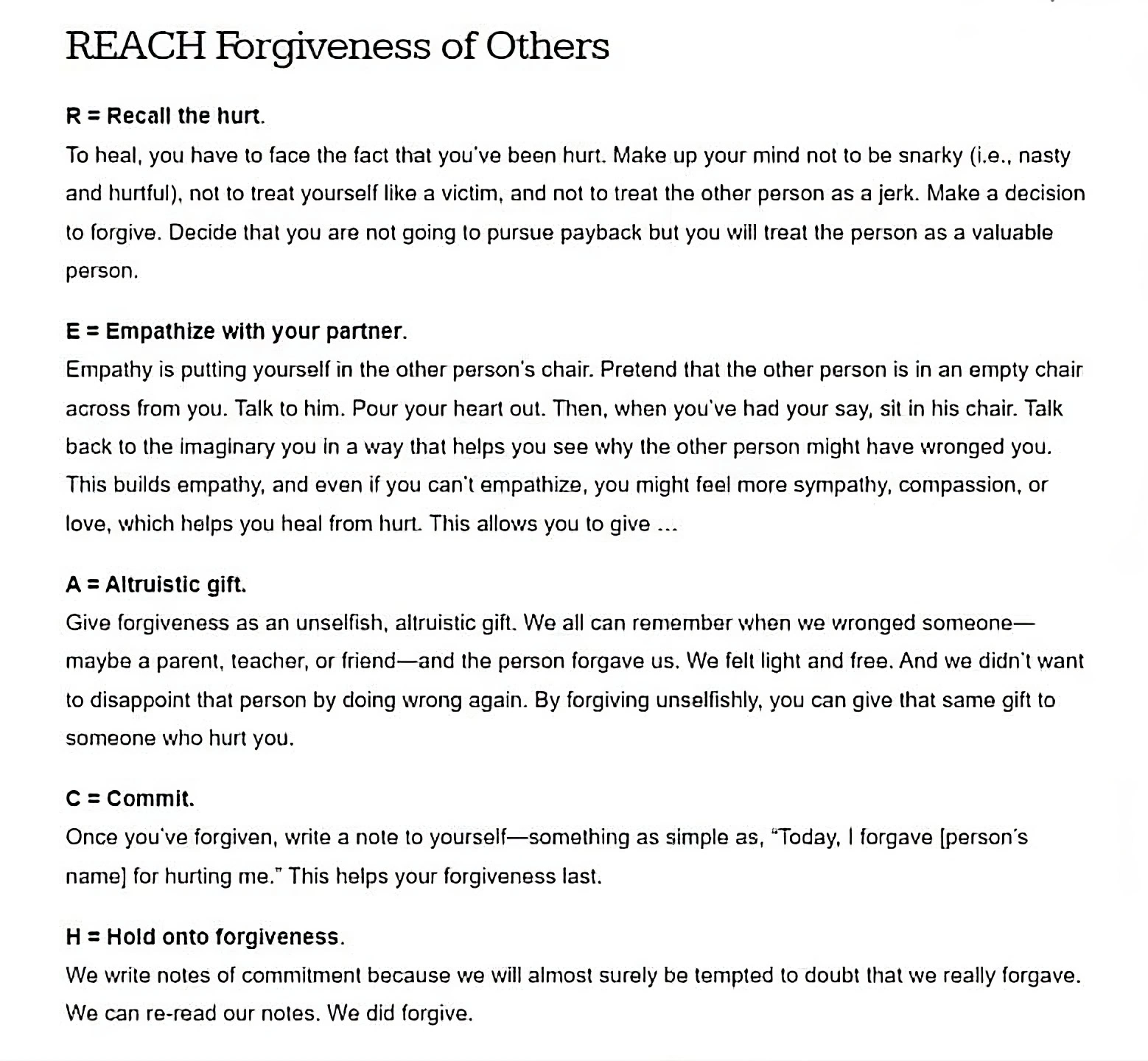Today's Thursday • 9 mins read
— By Dr. Sandip Roy.
Forgiveness and unforgiveness divide people sharply.
Some think it’s necessary to forgive to save a relationship, even if it’s hard. Then some maintain we don’t ever need to forgive any single person in our lives.
Forgiving a brutal offender is seen as a sign of weakness. So, most murder victims’ families want the killer executed.
But rarely, some forgive the offender. For them, forgiveness doesn’t mean fragility.
If we understood what forgiveness is not, we might forgive many more, and move on to a better tomorrow.
What Forgiveness Is Not?
Forgiveness is not condoning, reconciling, or excusing.
- Condoning means deliberately ignoring the wrongness of the deed.
- Reconciliation indicates there is an intention to repair the relationship.
- Excusing means acknowledging that the offender had a valid reason to do so.
So, to forgive, you don’t have to ignore the act, wish to repair the relationship, or justify the offense.
Most psychologists concur with Enright, Gassin, and Wu (1992) that forgiveness is distinct from pardon (which is more apposite to the legal realm), condonation (which implies justifying the transgression), and excusing (which implies recognition that the transgressor had a good reason for committing the transgression). It is also distinct from reconciliation, which is a term implying the restoration of a relationship.
— Michael E. McCullough, 2001
What Is Forgiveness
Forgiveness is a deliberate choice to release your negative feelings and thoughts, like anger, bitterness, or revengefulness, accept the past, and move on in life. To forgive is to decide not to hold on to a memory that hurts.

7 Not’s of Forgiveness
1. To forgive is not a favor for the other person, but for yourself.
Forgiving is not an act of charity or benevolence. Rather, it’s an act of self-preservation.
Forgiveness is a favor you do for yourself. The emotional pain ends when you release your anger and grief from the experience. Then, that incident becomes just a lesson.
“It (forgiveness) is an active process in which you make a conscious decision to let go of negative feelings, whether the person deserves it or not.”
— Karen Swartz, Professor of Psychiatry and Behavioral Sciences at The Johns Hopkins Hospital
And just because you stopped being angry and hateful doesn’t mean you start to like them again. It simply means you accept that the person is no longer important in your life decisions.
You don’t want them to take up negative space in your thoughts anymore.
2. Forgiving does not mean you have condoned or pardoned a wrongdoer’s actions.
To condone is to disregard or overlook something. If someone condones immoral and unethical behavior, it indicates they accept it and enable it to happen.
Forgiving does not imply condoning the actions of your violator. When you forgive, it does not mean you deem their behavior acceptable and unpunishable.
Forgiveness does not need you to justify the actions of the offender. By forgiving, you are not agreeing that you will accept and forgive their similar future sins as well.
3. True forgiveness is not an enforced or manipulated decision.
Forgiveness is an intentional choice. As the hurt person, you have the freedom to forgive or not forgive.
The offender, or someone who favors them, must not compel or influence you into forgiving them. If they coerce you to forgive, then your forgiveness is artificial, not true.
Sometimes, the offender may manipulate you into forgiving them. They may offer an immediate apology or repeated requests for your pardon. Some may use common friends to nudge you into forgiveness.
Know this: An apology is not a tool to demand forgiveness.
Whoever wronged you cannot force you to forgive them just because they said Sorry.
So, don’t be quick to forgive when they apologize or ask for a pardon. Take your time. And forgive only when you want to.
4. When you forgive, it does not imply everything is fine now, with nothing else left to discuss.
Forgiveness is not an instant process of rewinding and undoing.
You may have been the victim of severe abuse by a parent or a partner. When it came to forgiving them, you always wondered, “How can I forgive those who bullied me when I was dependent on them?”
Forgiving a parent for childhood bullying does not mean you also permit them to say or do anything from now on. They will never have the right to tell you that your parenting style will spoil your children.
Forgiving a partner or an ex-partner does not give them the right to be irresponsible with you in the future. Nor does it mean that you have no more issues to discuss with them.
5. Forgiveness does not mean you forget the incident.
Forgiveness does not include forgetting the incident.
We often hear the expression “forgive and forget.” But forgiving does not automatically include forgetting the wrongdoing.
Forgiveness is not erasing the incident from your memory. At the same time, it is also not letting it affect your present.
You don’t have to forget the injustice. Forgiving someone does not absolve them of all responsibility for their actions.
When you forgive, you may want to remember the event. It can help you recognize when another person is committing the same offense against you.
Your forgiveness turns it from a cause of suffering into a teaching moment. It allows you to move on with your lives.
6. Forgiveness does not include the condition that you must notify the person you have forgiven them.
Forgiving someone does not imply that you have to tell your offender that you have forgiven them. It makes little difference if the person you forgave is aware of your forgiveness.
Forgiveness is first and foremost for you, not for them. It is an act of letting go and does not have to be a two-way street.
Forgiveness is an act of self-care, something that you do only for yourself. You do not have to include the person who wronged you in your self-healing process.
Your pardon is enough in itself. There is no need for your offender to accept your forgiveness for your pardon to be complete.
Forgiving also does not oblige you to remain silent about their future misdeeds, if you choose to be with them. Make it clear that you want them to treat you with fairness and kindness from now on.
Tell them you would rather not have your feelings hurt again. If they still mistreat you, do not hesitate to speak up or break up with them.
7. Forgiving does not mean you have to interact with the person who has wronged you, or they can re-establish a connection with you.
Forgiveness does not need you and your perpetrator to re-establish contact if you broke up.
Forgiveness is about not freezing yourself inside that moment. It is about not keeping the anger and bitterness bottled up.
As Buddha said, holding on to anger is like grasping a hot coal with the intent of throwing it at someone else; you are the one who gets burned.
Forgiving someone does not mean you must now get back with them, and both act as if nothing has happened. Nor does it mean that they can return to your life whenever they choose.
Even if they apologize and make amends, it is always your choice to allow them into your life, and forgive them or not.
Is forgiving someone a sign of weakness?
No, forgiveness is not a sign of weakness. People receiving forgiveness training become emotionally stronger, more confident, and more optimistic (Luskin, 2003).
Forgiveness releases the associated regret, hatred, and anger. It helps heal our emotional trauma and protects against future upsets.
An act of pardon can make us feel more positive and hopeful about life.
According to studies, forgiveness can have a significant impact on your physical and mental health. It can lower your chance of a heart assault, decrease cholesterol levels and blood pressure, reduce anxiety and depression, and improve sleep and inner peace.
REACH Model of Forgiveness
Worthington’s REACH Model of Forgiveness is a widely used forgiveness training tool.
- R = Recalling the hurt: Acknowledging and remembering the pain caused by the offense.
- E = Empathizing with the person: Understanding the offender’s perspective and feelings.
- A = Altruistic gift of forgiveness: Offering forgiveness selflessly, without expecting anything in return.
- C = Commitment to your forgiveness: Making a conscious decision to forgive and maintaining that choice.
- H = Holding on to forgiveness: Actively retaining the decision to forgive and not reverting to resentment.

There’s another model: Robert Enright’s Process Model of Psychological Forgiveness.
5 Stages of Forgiveness
There is a general agreement that people go through five stages of emotional forgiveness:
- Recognizing the effects of the hurtful act and feeling the brunt of the negative emotions that resulted from it.
- Feeling anger and pain at the person for violating their moral code of conduct, crossing the safety boundaries, and undermining mutual trust.
- Working through these emotions with oneself and others (other people who are supportive, or mental health professionals).
- Developing empathy for the perpetrator. Empathy does not mean having compassion for the abuser, but having an understanding of what their thoughts and feelings were when they carried out that act.
- Making peace with oneself, by letting go of regret, grief, anger, or any other negative emotions, and forgiving them without initiating any contact with them.
Many scholars see two stages of forgiveness:
Today, many scholars see two stages of forgiveness:
- Decision stage: when one must decide whether to forgive someone for a hurtful act, or not.
- Emotional forgiveness: when one gradually replaces the unforgiving feelings (resentment, bitterness, or anger) with positive emotions (empathy, compassion, and even affection) for the offender.
How To Forgive Yourself For Hurting Someone Unintentionally?
Final Words
Finally, forgiveness is healing your way out of your mental turmoil. It helps improve your emotional well-being.
It’s a decision to leave negativity behind and move on with your life.
• • •
√ Also Read: Forgiving Someone Who Broke Your Trust, And Moving On?
√ Please share this if you found it helpful.
» You deserve happiness! Choosing therapy could be your best decision.
...
• Disclosure: Buying via our links earns us a small commission.